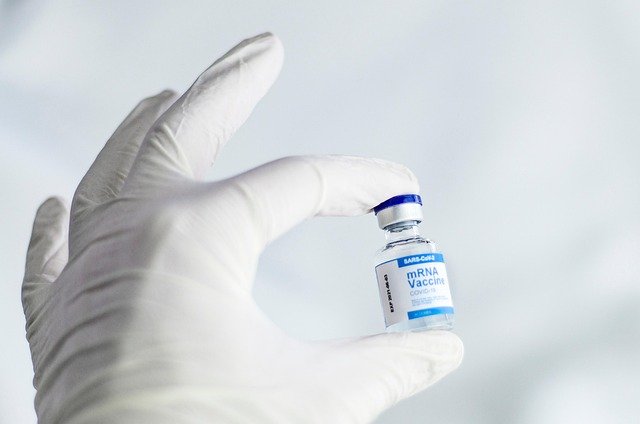Understanding the Relationship Between Radiation and Prostate Cancer Risk
Explore the latest studies on the impact of radiation on prostate cancer risk. Discover insights into how radiation exposure may affect the development and progression of prostate cancer. Gain valuable knowledge about potential risk factors and preventative measures that can help enhance your understanding of this critical health issue.

How does radiation exposure potentially impact prostate cancer risk?
Radiation exposure has long been associated with an increased risk of various cancers, including prostate cancer. Studies have shown that ionizing radiation, which can damage DNA and cellular structures, may contribute to the development of prostate cancer. This type of radiation can come from various sources, including medical imaging procedures, occupational exposure, and environmental factors.
Research suggests that high doses of radiation, particularly to the pelvic area, may increase the risk of prostate cancer. However, it’s important to note that the relationship between radiation exposure and prostate cancer is complex and not fully understood. The risk may depend on factors such as the dose of radiation, duration of exposure, and individual susceptibility.
What are the main sources of radiation that may affect prostate cancer risk?
Several sources of radiation have been identified as potential contributors to prostate cancer risk:
-
Medical imaging: Diagnostic procedures such as CT scans and X-rays, especially those involving the pelvic area, can expose the prostate to radiation.
-
Occupational exposure: Certain professions, such as nuclear power plant workers, radiologists, and airline crew members, may have increased exposure to ionizing radiation.
-
Environmental factors: Natural background radiation and exposure to radioactive materials in the environment can contribute to cumulative radiation exposure over time.
-
Radiation therapy: While used to treat various cancers, radiation therapy to nearby organs may inadvertently expose the prostate to radiation.
What do recent studies reveal about radiation and prostate cancer?
Recent studies have provided valuable insights into the relationship between radiation and prostate cancer:
-
A large-scale study published in the British Medical Journal found a modest increase in prostate cancer risk among men exposed to low-dose ionizing radiation from medical imaging procedures.
-
Research published in the International Journal of Cancer suggested that occupational exposure to low-dose ionizing radiation may be associated with an increased risk of aggressive prostate cancer.
-
A study in the journal Radiation Research indicated that exposure to cosmic radiation among airline crew members might be linked to a slightly elevated risk of prostate cancer.
These findings underscore the importance of continued research to better understand the complex relationship between radiation exposure and prostate cancer risk.
Are there specific risk factors that may increase radiation-related prostate cancer risk?
While radiation exposure itself is a potential risk factor for prostate cancer, certain factors may influence an individual’s susceptibility:
-
Age: Older men are generally at higher risk for prostate cancer, and this may also apply to radiation-related risk.
-
Genetic predisposition: Men with a family history of prostate cancer or certain genetic mutations may be more susceptible to radiation-induced cancer.
-
Cumulative exposure: The total amount of radiation exposure over time may play a role in cancer risk.
-
Overall health: Individuals with compromised immune systems or other health conditions may be more vulnerable to the effects of radiation.
-
Lifestyle factors: Poor diet, lack of exercise, and smoking may potentially interact with radiation exposure to increase cancer risk.
What preventative measures can be taken to reduce radiation-related prostate cancer risk?
While it’s not always possible to completely avoid radiation exposure, there are several steps that can be taken to minimize risk:
-
Limit unnecessary medical imaging: Discuss the necessity of imaging procedures with healthcare providers and explore alternative diagnostic methods when appropriate.
-
Practice occupational safety: Those working in radiation-exposed environments should adhere to safety guidelines and use protective equipment.
-
Maintain a healthy lifestyle: A balanced diet rich in antioxidants, regular exercise, and avoiding smoking may help mitigate some radiation-related risks.
-
Stay informed: Keep up-to-date with the latest research and recommendations regarding radiation exposure and prostate cancer risk.
-
Regular check-ups: Routine prostate cancer screenings, as recommended by healthcare providers, can help with early detection and treatment.
How does radiation therapy for prostate cancer factor into this relationship?
Radiation therapy is a common and effective treatment for prostate cancer. However, its use raises questions about potential long-term effects and secondary cancer risks. Here’s what current research suggests:
-
Targeted therapy: Modern radiation therapy techniques are highly targeted, minimizing exposure to surrounding healthy tissue.
-
Secondary cancer risk: While there is a small increased risk of secondary cancers following radiation therapy, the benefits of treatment generally outweigh this risk for most patients.
-
Ongoing monitoring: Patients who have undergone radiation therapy for prostate cancer are typically monitored closely for any signs of recurrence or secondary cancers.
-
Balancing risks and benefits: The decision to use radiation therapy should be made in consultation with healthcare providers, considering individual factors and treatment goals.
In conclusion, the relationship between radiation and prostate cancer risk is complex and multifaceted. While research has identified potential links between radiation exposure and increased prostate cancer risk, many factors contribute to an individual’s overall risk profile. As studies continue to shed light on this important health issue, it’s crucial for men to stay informed, practice preventative measures, and work closely with healthcare providers to manage their prostate cancer risk effectively.
This article is for informational purposes only and should not be considered medical advice. Please consult a qualified healthcare professional for personalized guidance and treatment.




